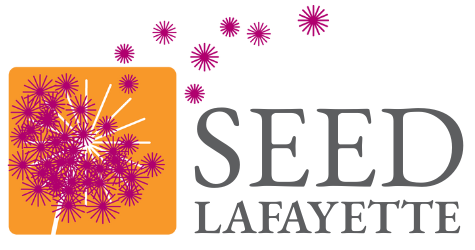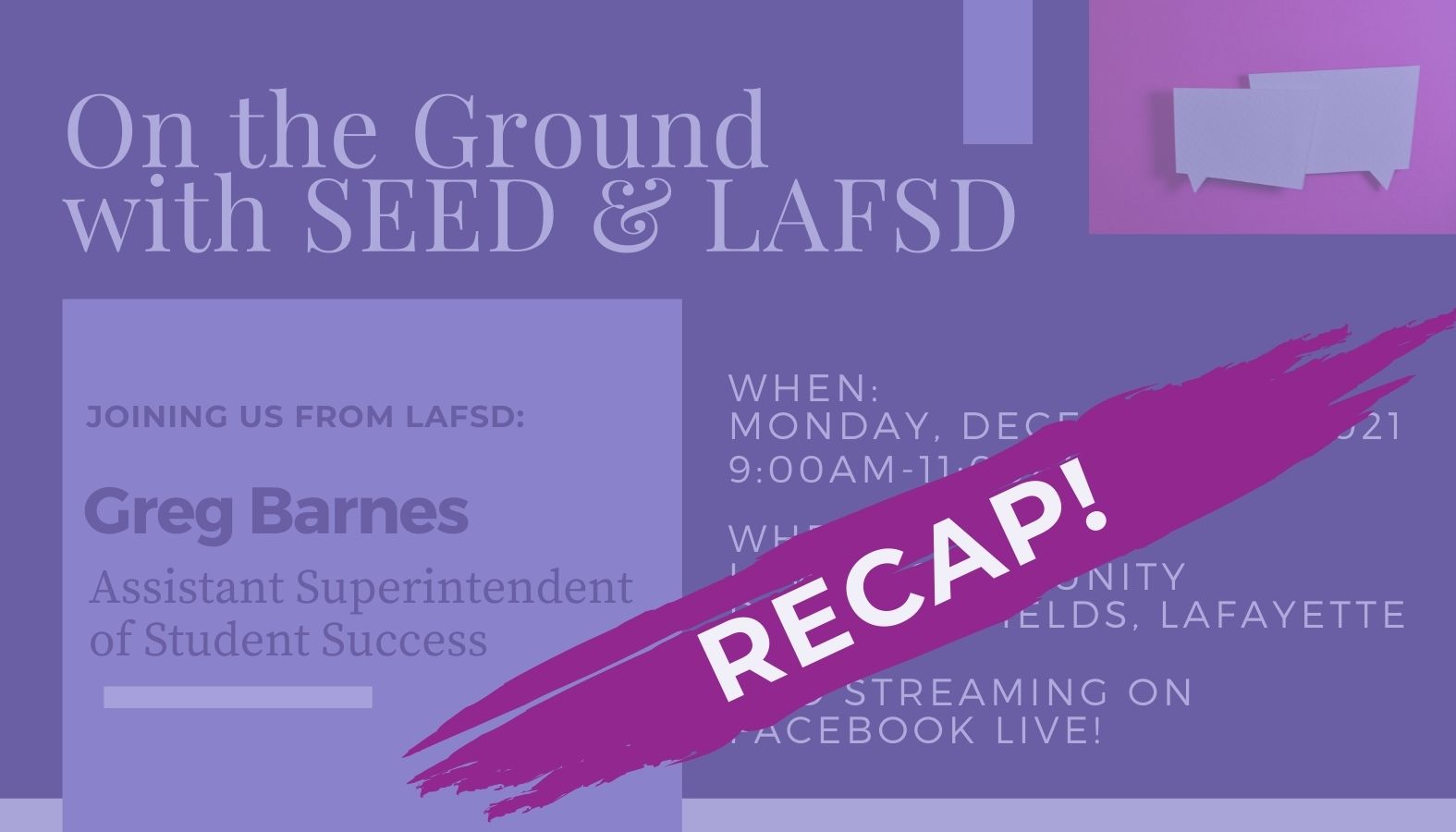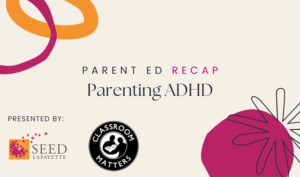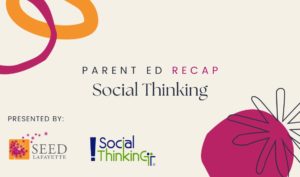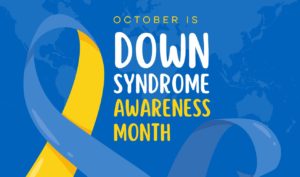We had hoped to meet in person, but Mother Nature had other plans for us — lots of beautiful rain! Zoom came to the rescue and the meetup with Greg Barnes, Assistant Superintendent of Student Success, and Pat Gargiulo, Director of Student Services with Lafayette School District moved forward.
A recording of our Zoom meeting is below, followed by brief notes taken during the meeting. Additionally, Greg Barnes shared a handout — download the PDF here, or view it on GoogleDrive here.
The newly formed Student Services Advisory Committee is seeking input on short and long term goals for LafSD, looking toward substantive change in how the district works with students with disabilities. This is not a one time request, but an ongoing conversation, building a partnership between the community and the district, including formal parent structures built into the district’s burgeoning structures.
The philosophy of the committee is simple, “Every child, every day,” meaning that every child should be included and given the most rigorous social and academic experience in public education every day.
Services Advisory Committee structure:
- Assistant Superintendent of Student Success
- Four LafSD admins
- Student services advisory committee – parents included for feedback on short and long-term goals. The committee will regularly get out to all the classrooms.
- Variety of discipline meetings – staff – psychologists, SLPs, etc…. Best practices, case sampling. Getting their feedback on SPED advisory committee goals. Meetings with the disciplines – high variety. Keep distilling info to get specific on short and long term goals. Seeing parallels and themes – what is a priority moving forward (student learning outcomes, for instance). More of a need to collaborate as a discipline.
Themes
More time for collaboration and calibration. Calibrate practices across the district, which could take a number of forms, including a Continuum of Services document to help inform decisions moving from year to year.
- Early Intervention (EI) to Middle School
- Learning Centers on each campus
- Services provided
- Sub-steps present in each of the larger steps to provide a continuum for students.
- Transitional pieces in SPED programming.
Details of each of the steps – going through meticulously – clear definition of each stage of SPED in the district. Beneficial to parents and staff – they can go somewhere for decision making – understanding what’s available at the next phase of the educational continuum for your child.
Data driven decision making. All specialists to come together – bringing their data and providing time and space to assist those students who have a variety of challenges, including students on the fence that would benefit from different programming.
Mental health is at a premium – schools are attending to it more and more, in the context of the IEP. The district has added elementary counselors for all students.
Counseling-Enriched programs – students that are presenting with significant mental health issues. At Stanley, students can do well with the curriculum. Don’t have an SDC, but a more fluid structure.
- Also considering regionalizing a program for CE – a classroom for all districts. Working with the SELPA on this as well.
- Hopefully, our attention will be going back to the concept of regionalizing
In elementary – more like a self-contained classroom. Stanley – more fluid. Big emphasis on mainstreaming kids, but having a CE classroom available.
Disability awareness – expanding our program by involving both SEED and the District.
Elementary school counselors – developing risk assessments, protocols for friendship groups, and multi-tier supports. 80% met in gen ed. Push-in services, clubs, etc…. 5% is individualized support. Calibrating on what’s working at our sites…
- Inclusive practices – most important person at each site is the principal. Philosophy = all kids/our kids should be included. “Why SHOULDN’T I teach this student?” should be the question.
Partnering with CDE programs? Not yet. Want to establish where we want to go. If it leads to a partnership, that’s something we want parent input on.
Public-facing flow chart and internal document
As much quantitative decision making as possible. Parents are an important part too. During transitions, everyone is involved. Effort to get the data to all members of the IEP team for analysis and decision making.
LafSD’s school year-end question to the SEED Community regarding communication: “Have you noticed a difference in communication between home and school?”
